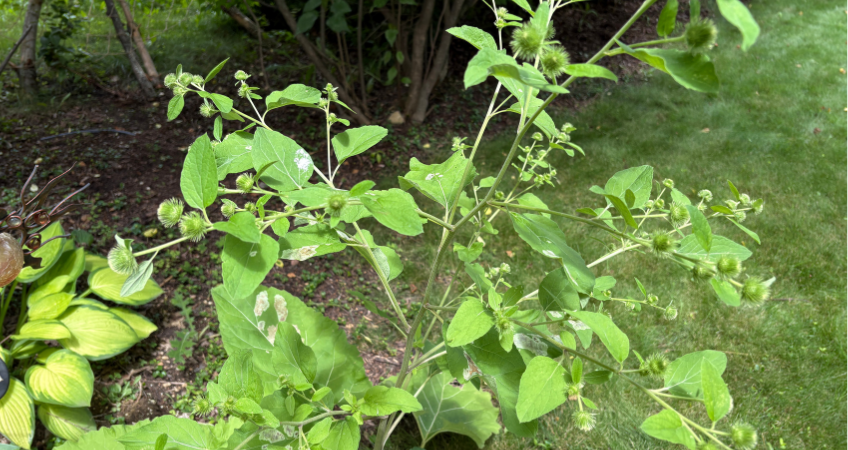Know Your Enemy: Invasive Plants Threatening Wisconsin Landscapes
How to Identify and Control 5 Common Invasive Species in Dane County
At LawnCare Plus, we believe a healthy lawn starts with understanding what’s not supposed to be growing in it. While not every weed is dangerous, some plants do far more damage than just looking out of place. Invasive species, plants that aren’t native and aggressively outcompete the local flora, can permanently change ecosystems, harm wildlife, and make your yard much harder to manage.
Here are five invasive plants common in the Madison and Dane County area—and how you can help keep them under control.
- Buckthorn: The Garden Invader That Won’t Quit
Buckthorn is one of the most widespread invasive shrubs in Wisconsin. It forms dense thickets that block sunlight, smother native plants, and even take over your garden beds.
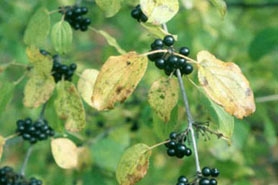
Photo Credit: Wisconsin DNR
What to Look For:
- Gray bark with horizontal stripes (younger branches) or thick, flaky bark (older stems)
- Oval-shaped leaves with fine serrations
- Small thorns on older branches
- Orange inner bark
(sometimes a scratch test can help differentiate it from native species like cherry, which will have an almond scent when scratched and no orange coloring) - Small blue fruits that birds eat—and spread
How to Remove It:
- Pull small plants by hand
- Cut down larger shrubs and treat the stumps with herbicides like Roundup®, 2,4-D, triclopyr, or Tordon® to prevent regrowth
2. Wild Parsnip: Beautiful and Dangerous
Brought to North America as a food crop, wild parsnip now poses a real danger. Its sap reacts with sunlight and can cause painful chemical burns on your skin.
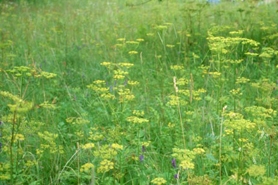
Photo Credit: Wisconsin DNR
What to Look For:
- Tall stalk (up to 6 feet in year two) with yellow, umbrella-shaped flowers
- Pinnate leaves that get smaller toward the top
- Wavy-patterned green stems
Control Tips:
- Wear gloves and long sleeves, ALWAYS
- Cut it down repeatedly to weaken the root
- Herbicides like glyphosate (Roundup®), 2,4-D, or triclopyr are effective
- For a more adventurous approach, harvest and eat the first-year roots (after frost improves the flavor), but handle with extreme care
3. Garlic Mustard: From Kitchen Herb to Forest Floor Foe
Originally introduced for cooking and medicinal use, garlic mustard has now taken over many Wisconsin forest understories and garden beds.
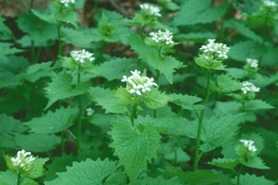
Photo Credit: Wisconsin DNR
What to Look For:
- Heart-shaped leaves with jagged edges (first year)
- Tall stem with small white flowers (second year)
- Strong garlic smell when crushed
How to Remove It:
- Pull plants before they go to seed
- Dispose in trash (not compost)
- Use herbicide if pulling is not feasible
- Leaves can be eaten fresh or used like parsley, but only from clean areas away from roads or treatments
4. Crown Vetch: The DOT’s Unintended Mistake
Originally planted by the Department of Transportation for erosion control, crown vetch has now become a roadside nightmare, smothering native prairie species.
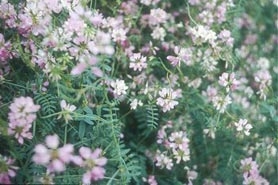
Photo Credit: Robert Bierman
What to Look For:
- Vining growth habit with tendrils
- Pinnate leaves (resembling honeylocust)
- Pink to purple flowers with white tips in early summer
Control Tips:
- Persistent herbicide treatments (it may take years)
- Manual pulling is an option but can be tedious
5. Dame’s Rocket: Pretty but Problematic
Often mistaken for native phlox, dame’s rocket is another beautiful garden escapee that spreads rapidly and is now listed as a noxious weed in Wisconsin.
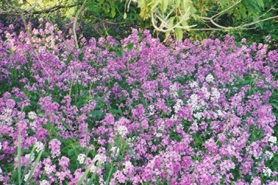
Photo Credit: Elizabeth J. Czarapata
What to Look For:
- Soft, ovate leaves in an alternate leaf pattern
- Four-petaled pink, purple, or white flowers (phlox has five petals)
- Blooms in spring, while native phlox blooms later in summer
How to Remove It:
- Pull plants before they go to seed
- Use herbicide if necessary
- Check wildflower mixes before planting, dame’s rocket often sneaks in
Don’t Let Invasives Win the War on Your Yard
All five of these species, buckthorn, wild parsnip, garlic mustard, crown vetch, and dame’s rocket have been labeled as invasive by the Wisconsin DNR. They spread quickly, have no natural predators in our area, and threaten both biodiversity and the beauty of your outdoor spaces.
By learning how to identify and manage them, you’re taking an important step in protecting your yard, and Wisconsin’s ecosystems.
Need Help with Invasive Weed Removal?
At LawnCare Plus, we know how to spot and stop these troublemakers. Whether you’re dealing with buckthorn in the backyard or garlic mustard creeping into your garden beds, we can help restore balance to your landscape.
Call us for a free estimate or contact us online to schedule a consultation. Together, we’ll keep Wisconsin native.

